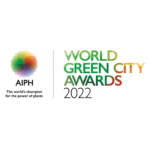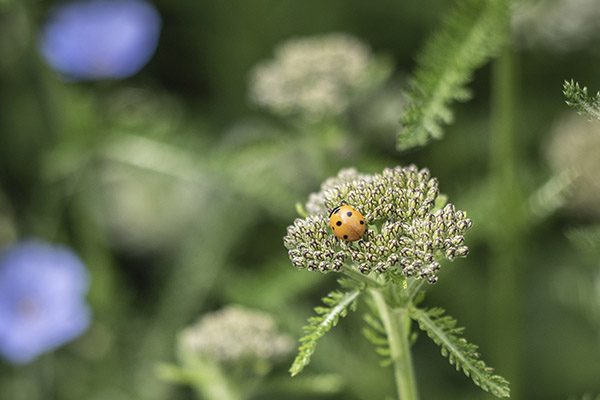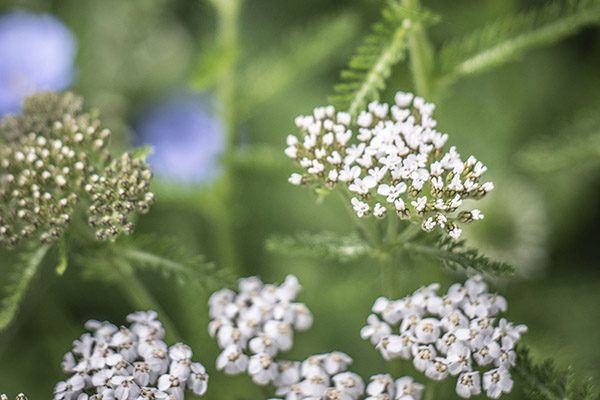Addressing the urban challenge
Breadth of the issue – How are the problem(s) that are being tackled by your initiative affecting citizens/local businesses or a significant component of the local wildlife?
As mentioned under “Vision”, this program was designed to address a variety of social and environmental challenges. Notably, insects and insectivores are both in global decline. Many of these species provide benefits or “ecosystem services” to people, such as pollination, which is essential for food production, as well as cultural, aesthetic and health benefits, such as the stress attenuation that comes from spending time in nature. Beyond this, there is also the climate emergency: we recognize an urgent need for both mitigative actions, such as carbon sequestration, and adaptive actions, such as fostering more drought tolerant landscapes. The meadow pilot project was designed to address this wide scope of social and ecological challenges.
Depth of the issue – How seriously are the problems being tackled by your initiative impacting the life of the citizens/businesses/wildlife concerned?
Climate change and mass extinction need no introduction. Every day we are exposed to shocking statistics about the rate of global species loss, sea level rise, and other symptoms of a broken relationship with nature.
In British Columbia (BC), we know these impacts intimately. The year 2021 is now famous in BC for its record-breaking heat dome and atmospheric river events, which sparked deadly fires, heat waves and floods that killed hundreds of people and thousands of animals. Winters in the “Rain City” are characterized by relentless rain, but our summers average drier than most other Canadian cities and are often punctuated by moderate to severe drought.
We are becoming a city of extremes. In response, our city government is forced to find creative solutions that help people and ecosystems weather the storm. Innovative programs like the meadows pilot can help make our built and natural assets more resilient.
Additionally, though Vancouver is surrounded by picturesque mountains and shoreline, it is a highly urbanized and dense city with unequal access to nature within its boundaries. Early planners sought to create a spatially even network of parks in the city, but access to healthy natural areas within these parks is a recent consideration. Many neighbourhoods have limited access to nature, with small, conventionally managed parks “working hard” to service very dense neighbourhoods. Adding or expanding parks is a challenge but converting turf into meadows within existing parks can help to add new opportunities to access nature in relatively nature-deprived neighbourhoods.
The power of plants and natural ecosystems to deliver benefits
How is the initiative shaped by scientific evidence of the potential for plants and natural ecosystems to deliver benefits?
Many species and ecosystems are rapidly declining. According to a scientific meta-analysis, more than 40% of insect species are declining, and a third are already endangered. Another review demonstrates that intense lawn management practices are responsible for some of these declines: conventional lawns increase the prevalence of pest species, flatten diversity of plants and insects, and limit nesting and foraging opportunities for birds.
Since the launch of this program, we have scaled up and adapted the project based on plenty of evidence regarding the multiple benefits these updated practices offer.
This program’s design was based on findings of a multi-year graduate research project conducted in collaboration with Park Board maintenance crews. This research explored the social-ecological benefits, feasibility and operational considerations of replacing lawns with pollinator habitat. The project included field-based empirical research, and extensive literature review of pertinent science. Our design choices are influenced by research regarding “cues to care”, a framework for designing ecological spaces that suit public expectations.
We have research partnerships with non-profits and universities to monitor and evaluate the impact of this program. We learn and implement iteratively based on their findings so that we are always aligned with current evidence. Our research partners are monitoring soil microbes, surveying presence of bees and other pollinators, and insect predators like bats and birds, while Park Board staff additionally study soil moisture, temperature, and species abundance.
How has the city exploited the potential of plants and associated ecosystems to deliver more than one benefit?
Implementation was focused in strategic areas, e.g., on slopes that are difficult to mow, or low-use turf areas that are infrequently used for gathering. This allows us to maximize ecological benefits while also preserving cherished passive-use turf areas where people gather for picnics and play.
The project also supports and expands ongoing citizen science and stewardship opportunities in the city. Many groups we work with, such as Environmental Youth Alliance and Hives for Humanity, have pollinator projects in and around the pilot sites.
Replacing mown lawns with lush meadows has many environmental and climate benefits including carbon sequestration, drought resilience, reduced irrigation needs, and new habitat and food sources for pollinators and other wildlife. However, meadows also create social benefits; it has been repeatedly demonstrated that having access to nature is essential for mental and physical wellbeing. Residents with good access to nature have lower rates of chronic disease related to sedentary lifestyles. Playing in nature improves the cognitive development, memory, social skills and attention of children, which the many outdoor preschools that use Vancouver city parks can attest to. On the other hand, children that lack access to nature experience higher rates of learning and attention related disabilities, and chronic diseases such as obesity, diabetes and hypertension.
Adding meadows and other natural areas to parks creates new opportunities for people to connect with nature, which improves health outcomes city-wide.
Innovative and Collaborative Solution
How does the initiative show evidence of feasibility, including on-going financial and logistical support?
A lot of the work is supported by a reprioritization of management practices rather than adding in new resources; in fact, low-intensity meadow sites require less financial support compared to conventional turf, and logistical support needs will subside as we troubleshoot and iterate the program implementation based on pilot findings. An economic case study of the maintenance costs of City-owned turf assets in Trois‐Rivières, Canada, suggests that cost savings of 36% may be possible with a modest reduction of mowing frequency. This study included costs of workers’ salaries, equipment and fuel, but did not include fertilizers or pesticides, nor any indirect economic benefits such as increase pollination, carbon sequestration, etc.
In meadow sites, maintenance staff will spend less time mowing, but will need to maintain the edges and trails, as well as monitor and manage garbage and weeds. We have supported the enhancements with seeds ($45,000) and planting ($10,000). We will also be purchasing multifunctional maintenance equipment to support the annual mowing ($130,000). Since we are including perennial species in the seed mixes, the need to reseed sites will also be minimized.
In what ways is the initiative innovative?
We hear often from Indigenous partners and the host First Nations (Musqueam, Squamish and Tsleil-Waututh) about the importance of working with the land instead of against it. This project was an opportunity for us to incorporate this piece of Indigenous wisdom into management practices.
The challenges this project aims to address (biodiversity loss, low access to nature, etc.) are symptoms of a colonial system of land care. Colonial systems create a hierarchy of values: practices and norms that don’t conform to dominant colonial thinking are displaced and erased. What this means, in practice, is that many ways of relating to land are excluded from city parks because they do not fit the mould of how parks “ought” to be used (i.e., for recreation or aesthetics, but not ceremony, foraging, etc.).
This pilot project is one piece of a larger puzzle to decolonize park management. Although our urban meadows are novel ecosystems, they have been able to support native animals and insects, and plants that are culturally important to Indigenous people but rare in the city. One example of such a plant is Camas, a flowering bulb that served historically as a starchy staple food for many Coasts Salish peoples.
In many ways, the meadows pilot challenges colonial standards of “horticultural excellence” that are upheld in parks and recreation systems globally. Using a decolonial lens, we can better see the benefits that naturalized spaces and relational practices provide. Through meadows, we are striving to uphold multiple land stewardship practices and values.
How is the initiative supported by collaborative working across disciplines and sectors?
- This initiative is co-developed with the current turf maintenance teams to reduce emissions and diversify horticultural skillsets.
- GIS specialists identify turf typologies based on surface levels, use and condition to identify pilot sites and to track those.
- Ecologists and biologists explore a variety of questions related to species diversity and productivity, reproductive populations, species interactions, and informing species selections for seed and maintenance practices (e.g. timing of mowing).
- Soil scientists examine soil changes and the potential for carbon sequestration based on mowing strategies – for example, by taking core samples and looking at biota found in pilot sites.
- Planners steer the vision and implementation to align with policy, produce benefits, and reduce risks (e.g. through research and risk mitigation plans). Planners report to the public and elected officials, track progress and outcomes, and deal with much of the administrative load.
- Landscape architects develop best management practices and maintenance and design guidelines for meadow management. They make recommendations for seed mixes and plant selection, site designs, and fire risk mitigation plans.
- Horticultural professionals make site specific planting and maintenance plans based on local site conditions (microclimate, solar access, water availability). They also manage invasives, weeds, and seeding of the sites.
- We work across departments and governments to share lessons and knowledge. For example, engineers in the city have learned and applied lessons from the meadows pilot to improve green stormwater infrastructure implementation.
- We collaborate with many citizen science organizations to steward the meadows and the pollinators that live there.
How does the initiative demonstrate evidence of community support?
We have evidence of support for this project through the involvement of five university-based research partners and seven core citizen science groups. The seven community-based groups represent a blend of arts, culture, youth and environmentally focused organizations throughout the city. Additionally, we received 33 emails from members of the public, of which the majority (22) were expressing their strong support and enthusiasm for the meadows. Although no record was kept of phone calls, staff recount a similar pattern, with the majority of public feedback being supportive of the meadows. It was partly this wide support for the meadows project, combined with its demonstrable benefits for biodiversity and ecosystem services, which prompted our elected public officials on the Board of Commissioners to renew and expand the pilot project in 2021.
Implementation, Impact and Replicability
How has the initiative had a ripple effect beyond the scope of the initiative itself, thereby demonstrating a change in the city’s and/or its partners’ way of working with plants?
Data from research partners and staff monitoring shows higher abundance of pollinating insects, birds and bats at meadow sites as a direct result of this pilot project.
At UBC, researchers are looking at native pollinating insect abundance and diversity at pilot sites and collecting and identifying pollen from the bees and flies to understand patterns of plant-pollinator interactions within the meadows. Preliminary findings shows that native bumblebee communities at the parks without meadows are typically dominated by just two very common species. At parks with meadows, we see a more even representation of five or six bumblebee species, and uncommon species like the Nevada Bumble Bee which was never detected at a park without a meadow.
Another researcher at UBC is exploring the distribution of bats across Metro Vancouver. We layered her spatial bat observation data in relation to meadow pilot sites, and found a strong correlation between the locations of the bats and meadow pilot sites, as well as other natural areas like golf course rough, open water sources, and forested areas.
Our assessments have found that, compared to adjacent traditional lawns, meadow sites achieved between 10x to 80x bloom count and 2x to 9x more pollinator visitation, hold 20-30% more soil moisture, and surface soil levels average 1.2 degrees cooler. Overall, these conditions help protect surrounding shrubs and trees during drought conditions, which are increasingly common due to climate change.
Research in 2022 will also explore the soil microbiomes on pollinators vs. control sites.
How has the initiative had a ripple effect beyond the scope of the initiative itself, thereby demonstrating a change in the city’s and/or its partners’ way of working with plants?
Park Board staff have shared lessons from this project widely both within and beyond the city. We have especially connected with other City teams working on green stormwater infrastructure and boulevard gardens. We learn from each other, share best management practices, and explore what’s working so that all projects and teams can benefit.
Additionally, the meadows pilot has included an intensive peer-to-peer education component whereby Planning and Maintenance staff have been able to share insights and lessons. This has helped to build knowledge about strategic plans among maintenance crews, and also helped planning staff to better understand the barriers and opportunities from ground teams’ perspectives. This has helped to bridge communication and implementation gaps between maintenance and planning staff and resulted in stronger implementation overall that has benefitted other projects.
There has been a two-way learning process between the Park Board and the publics, too. Stewardship groups and Indigenous land stewards have been doing natural area management for a long time, and we are contributing by building a framework for scaling up more natural and relational management practices at the municipal, system-wide scale.
How have other cities expressed interest in the initiative, or what potential does it have to interest other cities and be customised to their own circumstances?
Vancouver Park Board staff have presented on this project to other local governments such as Metro Vancouver and have also been invited to present on the meadow project to local governments across the province at the BC Species and Ecosystems at Risk Local Government Working Group winter webinar series. We have received positive feedback and interest from other local governments who are interested in learning more about our evolving meadow management practices. Learning from others and sharing what we are doing is an important part of evolving our landscape practices and growing as an institution.
Sustainability and Resilience
What efforts have been made to reduce the carbon footprint of the initiative?
Recent research on meadows shows that long grasses allow for resilient and reliable carbon storage, especially during periods of drought, since most of the carbon is stored underground. With the proper mowing equipment, the shift from mowing these sites every 2 weeks during the growing season to once or twice annually reduces carbon emissions during maintenance. Native grasses and pollinating flowers like clover require 50% less water compared to turf grass. This means that meadows with a diverse range of native and pollinating species stay green longer than turf during periods of drought making them more fire resistant and more resilient carbon sinks. In other words, this program reduces the carbon footprint of Park Operations by design, as it reduces maintenance needs, and it also sequesters more carbon than the status quo.
How have the anticipated impacts of climate change been considered?
The initiative was designed to make park ecosystems more resilient to climate change. Cooler, moister soils support ecosystems to be more resilient during summer heat and drought. More resilient plant systems mean more carbon sequestration, and also a positive feedback loop whereby those healthier trees can also shade the soil and hold moisture.
As mentioned above, the plants chosen to require as much as 50% less water compared to turf grass, reducing the need for irrigation. Plant species were selected based on their water needs, site conditions (e.g., wet/dry, sun/shade), spreading patterns, and bloom time. We selected a mix of BC native and broadly native (North American) species to see which species would compete best with the turf and was suitable for this changing climate and an urban context. We also included a mix of annuals and perennials to have early and late succession plants included to support a sustainable system. Invasive and aggressive spreading species were not included to support native species biodiversity and protect sport field assets. We referred to the BC Fire Smart BC Landscape Guide to select water smart plants: https://firesmartbc.ca/wp-content/uploads/2021/04/FireSmartBC_LandscapingGuide_Web_v2.pdf
What processes does the initiative include for it to be considerate in its use of soils and other natural resources?
Many meadow projects include chemical treatment or removal of existing turf and soil, but our approach slowing changes the turf landscape by working with and enhancing the grasses. We are custom mixing our seeds from sustainable sources and suppliers and purchasing perennial plugs from local native plant nurseries that do not use pesticides. Additionally, wildflower species typically thrive in low nutrient content soils, which means we do not need to import peat, compost, or other materials. The bare soils below removed lawns are typically enough to sustain a wildflower meadow.
Monitoring, Maintenance, and Management
How has the initiative been designed and implemented so that long-term needs for management and maintenance are reduced and can be met?
As mentioned, reduced maintenance needs are a key goal and outcome of this program, by design.
More specifically, we have piloted four distinct maintenance practices:
- No mow – No mowing but managing for invasive plants as needed
- Low mow – Annual mowing in turf conversion sites
- Enhanced low mow – Over-seeding and annual mowing in turf conversion sites
- Wildflower meadows –These areas are often more like horticulture beds with wildflowers with very minimal mowing needs, but regular weeding.
All of the above categories reduce maintenance needs, both immediately and over the longer-term. Traditional mown turf lawns are high maintenance, requiring regular mowing, weeding and irrigation during the summer. They also often need to be re-seeded or re-sodded of they are damaged as a result of summer drought, or pooling water.
Vancouver is notorious for its abundant winter rains, but it also experiences some of the driest summers in Canada, so such responsive maintenance is often necessary for traditional mown turf areas. Converting these spaces into meadows reduces the need for mowing, and our monitoring data demonstrated that meadows are more drought-resilient and hold water better during dry periods, so they also reduce irrigation needs. Additionally, we hypothesize that the variable root structure of meadows compared to monoculture grass turf supports infiltration and may alleviate wintertime pooling, flooding and surface erosion during the rainy season.
Overall, the result is a transition from high-maintenance mown turf to biodiverse, low-maintenance natural areas that can better cope with a wider variety of extreme weather conditions.
What protocols are in place to facilitate monitoring of results?
Six sample parks were visited weekly during the summer months (June, July, August) to assess the impact of maintenance changes on local urban ecology. During these site visits, staff counted the abundance of pollinating insects and birds, bloom species, moisture and temperature readings. As a control, adjacent traditional lawn sites were assessed using the same protocol, and their data compared.
We also accept public feedback on this project by e-mail and on social media which allows us to understand the perceived benefits and challenges of this program from the public’s perspective.
Additionally, we have on-going research partnerships with several non-profits and university researchers to monitor and evaluate the effects of this program. Each of these scholars use their own rigorous research methods, some of which include species transects and insect specimen collections. Some findings are described below, in the subsequent questions.
How has the initiative been enhanced in response to monitoring of results?
In some neighbourhoods, we received mixed feedback about the meadows pilot sites. Some park users were enthusiastic about the ecological benefits, finding that the changes enriched their overall park experience by providing new opportunities to connect with nature.
We also heard from people that clean edges and pathways are important for accessibility and maintenance. In response to those concerns, we adapted designs to emphasize these “cues to care” (central paths, perimeter treatments and increased monitoring) in our next phase of implementation. The “cues to care” we use are supported by scholarly research, community feedback, and maintenance considerations.
Additionally, we have a hazard response plan associated with the meadows. We heard concern from some residents that perceived dry, late-summer meadows to be a fire risk. Although our field data shows that pilot sites are actually cooler and moister environments, we’ve developed this hazard response plan so that we can have an incremental and measured approach to mowing and other response measures for extreme heat and drought, rather than responding reactively when there is a high level of public anxiety about fire.
























